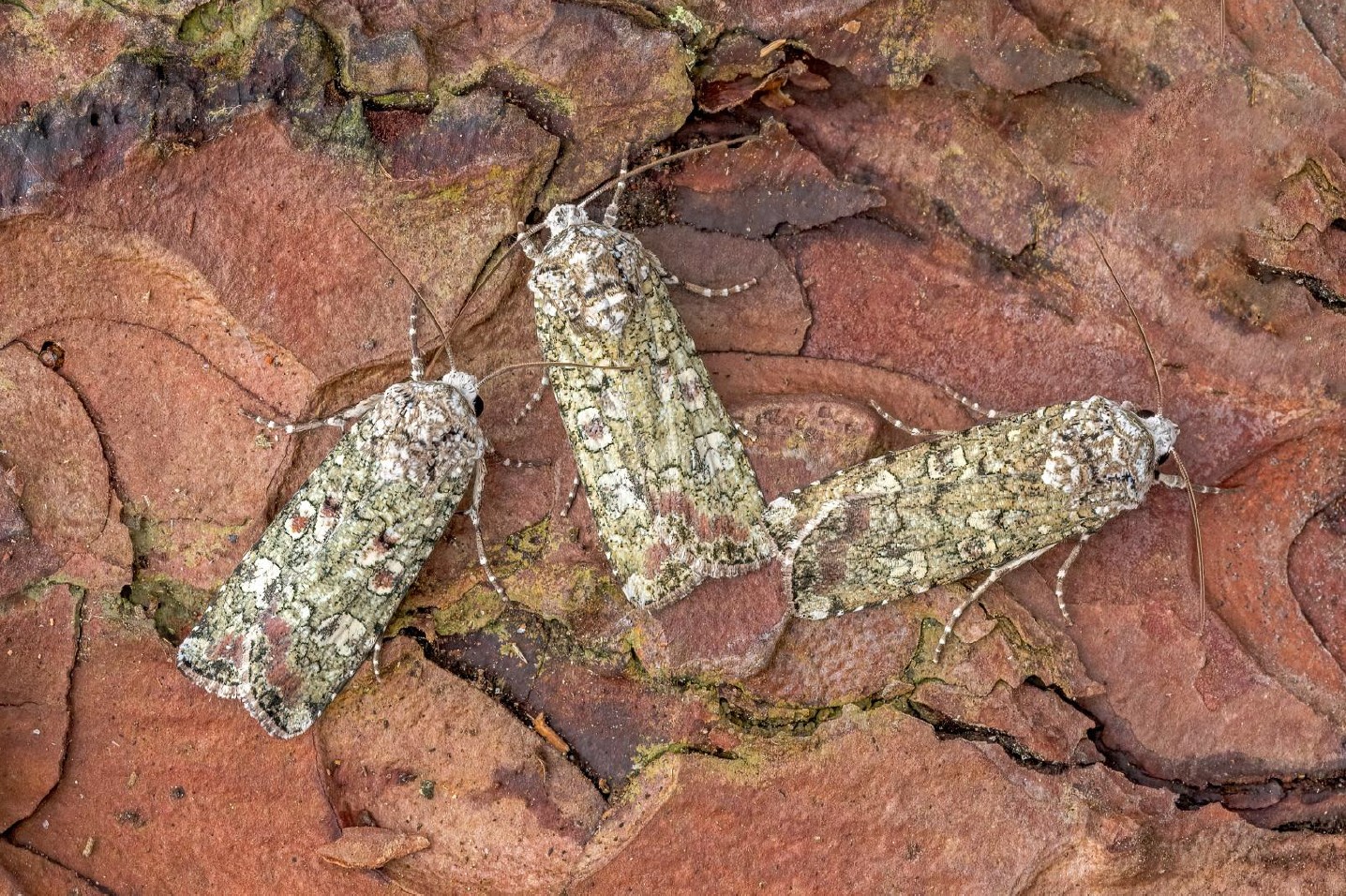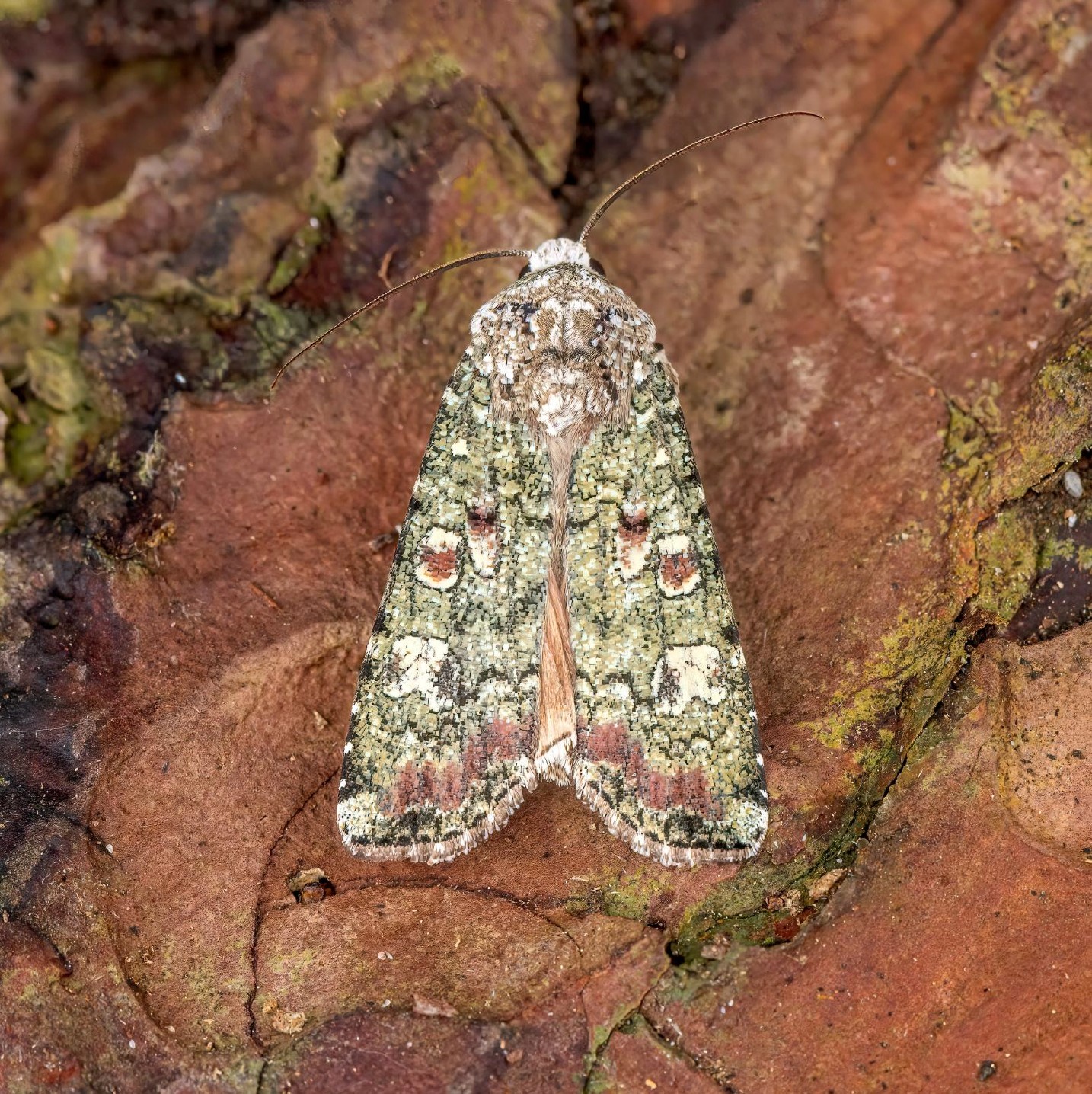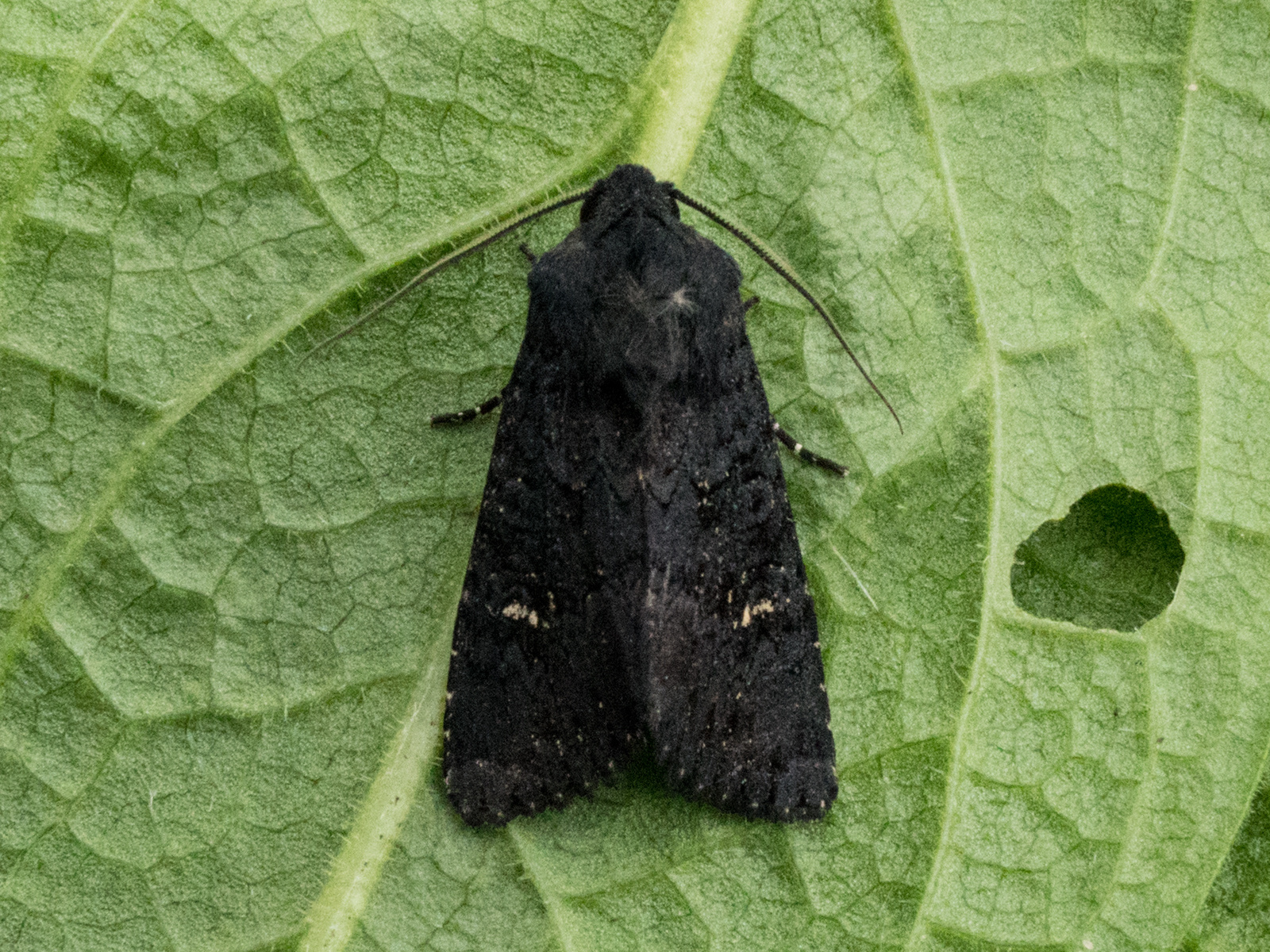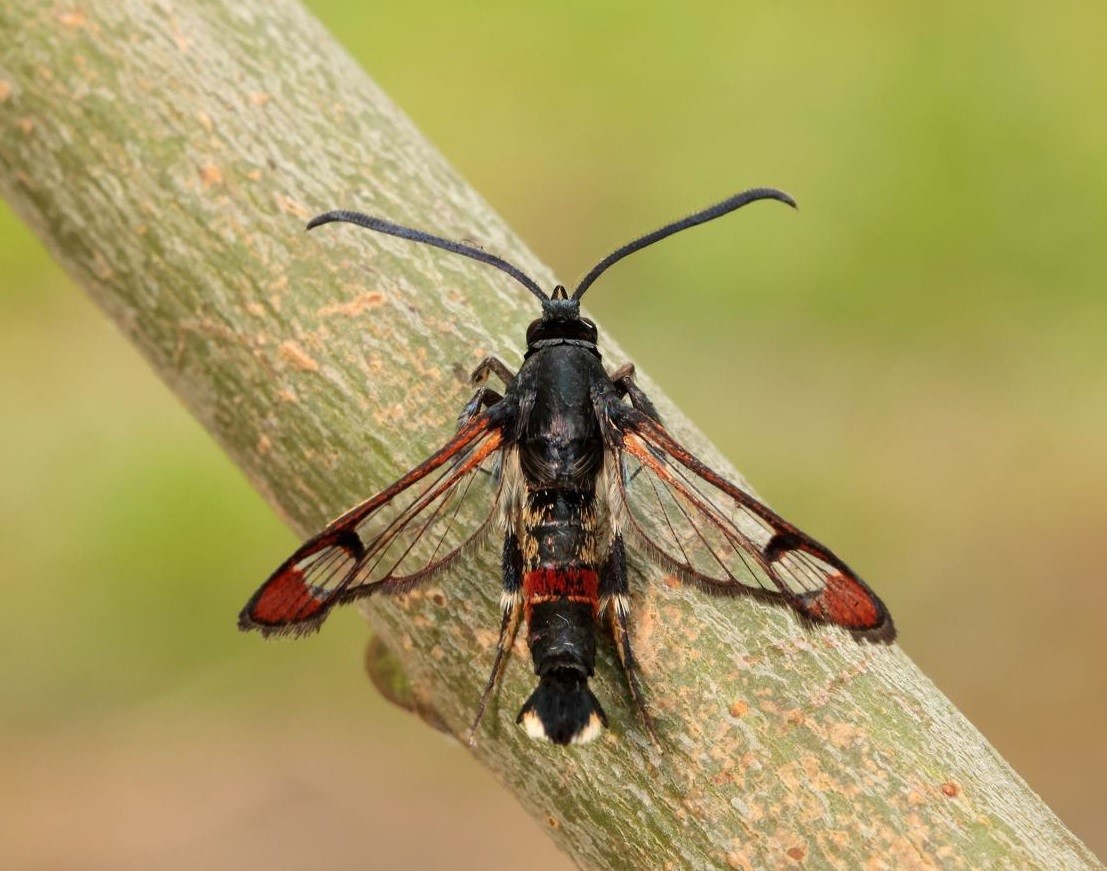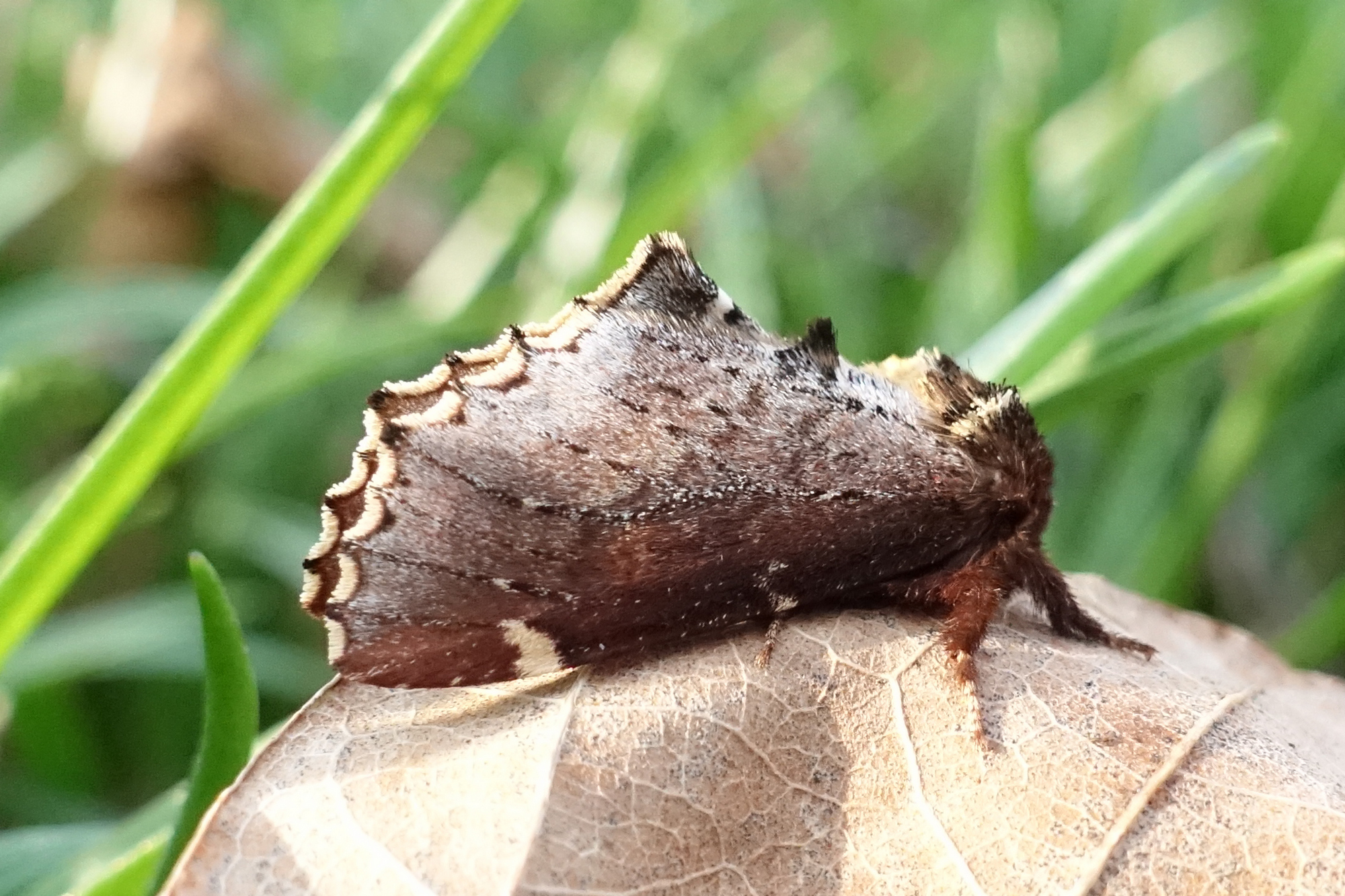The moths shown below came to a light-trap set in Tentsmuir in Fife last week by Nigel Voaden. This species is very distinctive with a forewing about 20mm long, parallel sided wings and the unique green colour with black cross-lines and white spots. The second photo shows the shiny brown hindwings with a chequered fringe.
The Portland Moth is a specialist moth living in sandy habitats, mostly coastal sand dunes where the caterpillar is thought to feed on Creeping Willow Salix repens and a number of other plants of sandy soils. The caterpillar is a typical noctuid shape with a smooth, short body and relatively small head. Like several similar species (White-line Dart, Archer’s Dart, Sand Dart etc) the caterpillar feeds at night and during the day burrows down into the sand for protection from predators. Earlier in the year the caterpillar would leave a trail in the sand from the food-plant to a pile of sand at the mouth of its burrow. The caterpillar pupates beneath the sand and emerges in late July and August.
This species has been found in widely spaced colonies right round the coast of the UK where the specialist, coastal habitat is found. However, most of these colonies have been lost with only a few left in Britain. In Scotland most suitable habitat is on the east coast (East Lothian, Fife – Tentsmuir, Angus, Aberdeenshire, Moray, Inverness-shire – it has been found in the river shingle of the Spey – and Sutherland). On the west coast there are a few widely scattered records, some of which maybe immigrants, from various islands.
The greatest number of records (19) is from D&G and all of them from the area immediately to the north of Luce Bay. Most have been found in Torrs Warren a huge area of SSSI sand dunes managed by the MOD but moths have been caught in Sandhead on the western end. A few records are further away with moths found inland, coming to light, over 12 kilometres from the sand dune area. It is just possible that other areas of shingle with sand or sand-dunes elsewhere in D&G may have colonies but none of them are anything like the size of Torrs Warren. Creeping Willow is quite a widespread plant and grows in several types of habitat as well as on sand.
So… we in D&G may well hold a large colony of this specialist moth but there have been no records since 1987! Obviously having the main part of the habitat under MOD control (it is part of a live firing range) means that few people, if any, have had a chance to look for the moth where it is most likely to be found. However, with the reports of other colonies throughout Britain disappearing it is important for us to find out if the Portland Moths of Luce Bay are still thriving. Butterfly Conservation has identified this species as one of 26 in Scotland which deserve immediate special attention.
If you have a chance to do some moth-trapping in this area in August (does anyone have a caravan in Sandhead?) please do so – you may be lucky. Meanwhile, I am trying to get permission from the MOD and the Forestry and Land Scotland (who have a large area of pine plantation at the eastern end) for permissions for us to take traps into the key areas. If this process takes too long or the weather is against us we will be ready for next year.
Let me know if you are going to ‘give it a go’ or if you are interested in the project.

